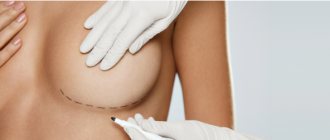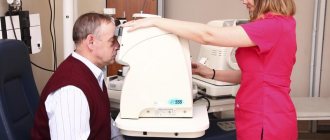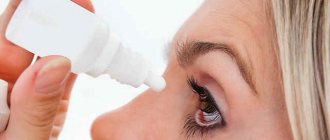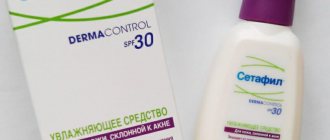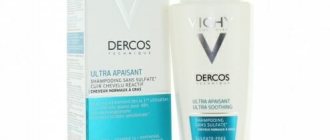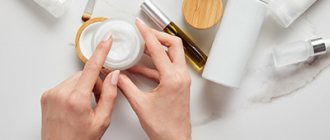Reasons Where to start How to fix it?
Surgical method Orthodontic treatment Prosthetics Cosmetic procedures A gummy smile is a physiological feature in which the upper gum is excessively exposed. With a normal smile, 1-2 mm of gum is visible; if more, then such a smile is called gingival or “gummy smile”. Such exposure of the mucous membrane is not considered a pathology, does not in any way affect diction, chewing function, or affects the health of the teeth.
However, studies claim that excessive mucosal exposure leads to decreased self-esteem and psychological changes in 25% of cases.
[1].
Causes of gummy smiles in children and adults
In adults, a gummy smile is quite rare, since this problem in most cases appears in childhood. There are several known main reasons for the appearance of this problem: improper development of the facial skeleton, a short upper lip that cannot cover the gum, or, on the contrary, an overly large gum that covers the upper row of teeth more than necessary. At the same time, a strongly pronounced gummy smile, as a rule, is a consequence of malocclusion, or anomalies in the development of the maxillofacial skeleton.
Surgical correction of the upper lip and upper frenulum
The surgical method consists of excision of a section of the mucous membrane on the inner surface of the upper lip and further attachment of the muscle fibers of the lip slightly lower than their original state.
If the cause of excessive visualization of the gums - and errors in eating and speaking - is a greatly shortened upper frenulum, which forms a dense cord and does not allow the upper lip to be lowered to the desired level, it is corrected.
As a rule, such an operation on the frenulum is performed in childhood.
After the surgical field has healed, the desired visual effect is achieved.
Reconstructive surgery in the treatment of gummy smiles
In situations where a gummy smile appears as a result of abnormal development of the facial skeleton, the only effective solution to the problem is surgery. For these purposes, osteotomy (correction of the upper jaw) and ostectomy (operation performed to correct the lower jaw) are used.
In the vast majority of cases, such surgical interventions are carried out in the presence of serious anomalies in the development of the bite, but can also be performed in the normal position of the jaws, for example, to correct a gummy smile.
Gingivectomy is a dental or surgical method for correcting high gums.
The gingivectomy method is indicated for conditions where there is too much gum above the upper teeth. As a result, it covers a very large part of the teeth, as if hanging over them, which forms a visual gummy smile.
Types of osteomucogingival surgeries in dentistry
It must be borne in mind that the results of this method are irreversible, so surgical correction is prescribed in the most extreme cases with the above-described features, and this happens infrequently.
Video: Gingivectomy - treatment of a gummy smile
The operating method is the most difficult. It is associated with the removal of gum tissue, which invariably has all the consequences of surgical intervention - bleeding of the gums, scarring, possible infection, asymmetry. The development of laser surgery helps to minimize the above-described consequences in operative dentistry, but it is still necessary to keep them in mind, paying due attention to preventive measures.
Removing gum tissue can lead to another consequence that has aesthetic and dental significance - excessive exposure of teeth. This will visually lengthen the teeth and partially expose the roots, which will negatively affect subsequent aesthetics. Therefore, further orthodontic correction with the use of dental crowns and onlays is required.
In order to get the most successful results, the dentist will make a decision not alone, but with a council of specialists, which should include a specialist in aesthetic dentistry.
A decision is made collectively about the need for surgery, and the volume of gum tissue that will be removed without negative consequences for aesthetics is determined as accurately as possible.
Combined techniques
BTA preparations are used both separately and in conjunction with other agents, during one or more sequential procedures aimed at treating different layers of the skin and its imperfections. Over the past few years, the principles of facial rejuvenation have undergone significant changes and have moved from a two-dimensional approach to correcting hypodynamic wrinkles to a three-dimensional approach, which also includes the aspect of tissue volume lost with age. This has led to some changes in the clinical use of BTA drugs. Now doctors are trying to correct not one, but several areas at once in order to achieve the most natural result. In addition, BTA preparations are increasingly used in conjunction with other products, including dermal fillers. The combined use of BTA and fillers corresponds to the concept of a three-dimensional approach to rejuvenation and provides more aesthetically attractive and long-lasting results. When administered together with a filler, BTA slows down metabolic processes in the surrounding tissues and thereby prolongs the period of action of the filler.
BTA also enhances the effect of laser rejuvenation, since collagen production in immobilized tissues occurs faster. For example, excellent aesthetic results can be achieved using laser lip rejuvenation with preliminary (1-2 weeks before) administration of BTA. Regular (with an interval of 4-6 weeks) BTA injections after anti-aging procedures prolong their effect.
In addition, BTA preparations are successfully used in conjunction with chemical peels, especially in patients with signs of photoaging.
BTA injections can also be combined with various plastic surgeries, for example, eyebrow lifting, blepharoplasty of the lower and upper eyelids and rhytidectomy.
Vertical wrinkles from the corners of the lips to the chin
Deep wrinkles from the corners of the lips to the chin can give the face a dissatisfied, gloomy, and sometimes even disdainful expression. The reason for the formation of such wrinkles lies in the combination of several factors: a reduction in collagen levels, atrophy of adipose tissue, and the presence of excess or sagging skin. All these factors can be corrected with plastic surgery and filler injections. In some cases, the depth of wrinkles from the corners of the lips to the chin may increase due to increased activity of the depressor anguli oris muscles, which, when attached to the skin, can pull the corners of the mouth down. Then, by relaxing these muscles with BTA preparations, it is possible to ensure that the zygomatic major and levator anguli oris muscles return the corners of the mouth to their normal position. In some patients, the increase in the depth of wrinkles from the corners of the lips to the chin is facilitated by the activity of the platysma muscles intertwined with the depressing corners of the mouth. Then the effect of BTA drugs should be directed at both muscle groups. Sometimes the best results can be achieved by combining BTA preparations and dermal fillers, with the former enhancing and prolonging the effect of the latter.
To determine the position and feel the depressing angles of the mouth muscles and platysma, the patient is asked to make a grimace and expose a row of lower teeth. Typically, BTA is administered intramuscularly at 2 points on each side. The first of these is the depressor anguli oris muscle, and the second is the platysma cords attached to the lateral part of the orbicularis oris muscle. Insertion of BTA near the corners of the lips or the middle of the lower lip is not recommended to avoid relaxation of the orbicularis oris and depressor lower lip muscles.
The first point is easy to detect by palpation; it is usually located on the continuation of the nasolabial folds on an imaginary vertical line located at a distance of 1 cm from the corners of the lips. The second point is located slightly closer to the outer border of the lower jaw (Figure 14)
.
Figure 14. BTA injection points for the correction of vertical wrinkles from the corners of the lips to the chin.
Some authors suggest administering one BTA injection on each side at a distance of no more than 1 cm above the lower edge of the lower jaw on imaginary parallel lines drawn through the corners of the lips. The recommended starting dose is 2-5 units. Botox® or 10 units. Dysport® at each injection point and is subject to adjustment depending on the patient's muscle mass.
Complications: Too much BTA or its administration near the corners of the mouth can cause asymmetry or disturbances in the oral area, such as drooling or difficulty pronouncing certain sounds.
Comment by cosmetologist, dermatovenereologist Ya. A. Yutskovskaya:
— The depressor anguli oris muscle is the most superficial muscle in the lower third of the face, therefore, in our experience, it is more rational to administer BTA subcutaneously: the needle is inserted into the skin at an acute angle, almost parallel to the surface. Thus, we control the depth of injection and exclude diffusion of the toxin into the underlying muscles - quadratus and depressor lower lip. In our experience, administration is 6-8 units. Dysport is enough to achieve a pronounced effect.
Postoperative care
Usually, after surgery, the doctor gives recommendations regarding scarring of the incisions. They must be strictly followed. Besides:
- For a week, preferably a week and a half, the patient should not smile, not to mention openly laugh.
- Hard and hot foods should be avoided.
- It is worth giving up those foods that require long and hard chewing.
- After each meal, and this is several times a day, you should definitely rinse your mouth with solutions intended for sanitization. They must be prescribed by a doctor.
Patients do not stay in the hospital for a long time, because surgical procedures are performed under local anesthesia. Thanks to the laser scalpel, the procedure is almost bloodless, the incision is precise and thin. Cosmetic scars after such manipulation are not visible.
Platysma bands
Age-related skin changes are associated with excessive laxity of the skin, loss of elasticity, formation of a double chin, lipodystrophy, prolapse of the submandibular glands and bone resorption. The subcutaneous muscle of the neck can become overactive, lose tone, or disintegrate, all of which leads to the so-called “turkey neck” effect. Platysma bundles located horizontally and vertically become noticeable with increased contraction.
Botulinum therapy in the neck area is aimed at reducing the external manifestations of platysma contraction. In addition, relaxation of the platysma bands has a positive cosmetic effect on the oval line and wrinkles from the corners of the lips to the chin. The best candidates for botulinum toxin therapy in the neck area are patients who demonstrate active contraction of the platysma during conversation.
BTA preparations are administered to the patient in a sitting position with maximum tension of the platysma in the direction of the cords. Depending on the length of the cord, the BTA is inserted into 4-8 points located at a distance of 1.5 cm from each other, grasping the cords with the non-dominant hand (Figure 16)
.
Figure 16. BTA injection points for correction of age-related changes in the neck.
The moderate initial recommended dose is 2 units. Botox® or 5 units. Dysport® for every point. Too deep administration and overdose should be avoided.
Complications: Often, after injections of BTA drugs into the neck area, bruises remain. It is recommended to avoid injecting BTA into the pharynx due to the risk of exposure of the underlying muscles to the toxin, which can lead to difficulty swallowing, weakening of the neck and dysphonia. Botulinum therapy is also not suitable for correcting horizontal wrinkles on the neck. In addition, due to the large number of injection points for BTA drugs, the anti-aging neck correction procedure is quite expensive.
Comment by cosmetologist, dermatovenereologist Ya. A. Yutskovskaya:
— To date, some experience has been accumulated and there are published data on botulinum therapy for horizontal neck wrinkles. Correction of this area, of course, requires a combination of botulinum therapy and injection plastic surgery using the most flexible and easily sculpted fillers. BTA injections as monotherapy are not always effective. The total dose of Dysport for the correction of neck wrinkles is 50-60 units. Botulinum toxin is injected along the wrinkle at points located 5 mm above it, at intervals of approximately 1 cm. As a rule, the drug in standard dilution is additionally diluted 2 times with saline solution.
Contraindications for surgery
Gum grafting is considered a minor surgical procedure, however, it has a number of contraindications. In particular, gingivoplasty is not performed if the patient:
- blood diseases, especially bleeding disorders;
- uncompensated diabetes mellitus;
- immune diseases in which such operations are prohibited;
- acute respiratory, inflammatory, infectious, etc. disease (temporary contraindication).
Also, before surgery, as a rule, it is recommended to carry out sanitation of the oral cavity, if necessary, to clean the gum pockets and get rid of tartar. This is necessary so that there are no pockets of infection left in the mouth, which can cause postoperative complications.
Dimple on the chin
A dimple on the chin is formed as a result of contraction of the mentalis muscle. The BTA drug is injected into one or two symmetrical points located approximately 1 cm from the line dividing the face in half directly above the protrusion of the chin. It is not allowed to insert BTA closer than 1 cm from the lower lip. Since the mentalis muscle is located deeper than the others, intramuscular injection is recommended to the periosteum, below the dimple. This will prevent the toxin from spreading into the orbicularis oris muscle. Some authors argue that, despite the deep location of the mentalis muscle, good results can be achieved with superficial injections (Figure 15)
. The recommended total dose is 2.5-8 units. Botox® or 2.5-20 units. Dysport®.
Figure 15. BTA insertion points for correction of dimpled chin
Complications: As long as the restrictions on BTA insertion near the lower lip are observed, this procedure does not entail any complications other than bruising and hematomas.
Immunogenicity
Immunological complications during botulinum therapy are reduced to acute allergic reactions to human serum albumin. This phenomenon is possible when too high doses of the toxin are administered, which leads to the formation of IgH antibodies, the number of which increases in direct proportion to the volume of the administered BTA drug. The result of this reaction of the body is inactivation of the toxin. However, in aesthetic medicine, BTA preparations are usually used in very small doses, so the issue of immunogenicity is not a cause for concern.
Prices
| General: | |
| Initial consultation with a dental specialist (30 min.) | 2,300 rub. |
| Extended consultation with a dentist, head of Orto-Arteli | 6,000 rub. |
| Consultation with a dentist with a description of the CT scan, drawing up a preliminary examination and treatment plan | 5,000 rub. |
| Spot X-ray | 650 rub. |
| Diagnostics: | |
| Primary diagnosis (two visits) First visit: taking impressions, making plaster models, photos. Analysis of jaw models, multisystem analysis of lateral TRG, OPTG analysis, photometry, diagnosis, development of a treatment plan. Second visit: announcing the results to the patient and discussing the treatment plan with him | from 30,000 rub. |
| Additional diagnostics | from 40,000 rub. |
| Diagnostics in the articulator | from 8,000 rub. |
| Computer cephalometry with axiography | 25,000 rub. |
| TENS | 8,000 rub. |
| Analysis of TRG in direct (frontal) projection | 5,000 rub. |
| TRG analysis in the genioparietal (SMV) projection | 5,000 rub. |
| Postural diagnostics Read more about diagnostics in our clinic | |


